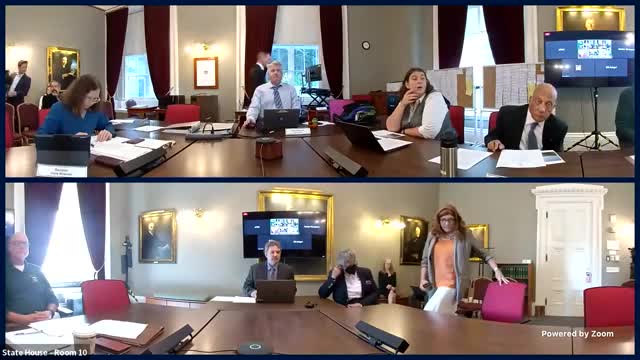Vermont launches ambitious plan to expand broadband access
June 12, 2024 | Joint Information Technology Oversight Committee/JITOC, Joint, Committees, Legislative , Vermont

This article was created by AI summarizing key points discussed. AI makes mistakes, so for full details and context, please refer to the video of the full meeting. Please report any errors so we can fix them. Report an error »

In a recent government meeting, key discussions centered around the ongoing efforts to enhance broadband connectivity and telecommunications in Vermont. Director Hunter Thompson presented a comprehensive overview of the state's broadband deployment plan, emphasizing the importance of public input and collaboration with various stakeholders.
The plan, guided by telecommunications goals outlined in state statutes, aims to address the growing need for improved broadband access across Vermont. Thompson highlighted that between 2021 and 2023, the number of households with access to high-speed internet increased significantly, yet the state faces challenges in expanding its broadband workforce, which has seen a decline of 12% from 2018 to 2022. To support the anticipated $700 million fiber build-out, an estimated 750 new workers will be needed in various sectors.
Public participation was a focal point of the planning process, with extensive outreach efforts resulting in over 50 pages of feedback from the community. This input led to several modifications in the final plan, including recommendations for a workforce incentive program and updates on mobile wireless grant pilot programs.
Thompson also addressed the issue of mobile wireless coverage, noting that while download speeds have improved, the actual service area has not expanded significantly. A majority of surveyed businesses reported adequate mobile coverage, yet many residents believe public funds should be utilized to enhance wireless services further.
A critical concern raised during the meeting was the expiration of the Affordable Connectivity Program (ACP), which previously provided financial assistance to approximately 24,000 Vermont households. The loss of this subsidy poses a significant challenge for low-income residents, with many facing tough choices between paying for essential services and basic necessities.
The meeting concluded with a series of recommendations aimed at improving broadband deployment efficiency, including the continuation of zero-cost fees in unserved areas and the exploration of pilot programs for small wireless facilities. The state plans to update data collection practices to better measure mobile coverage progress, ensuring that future efforts align with the needs of Vermont's residents.
The plan, guided by telecommunications goals outlined in state statutes, aims to address the growing need for improved broadband access across Vermont. Thompson highlighted that between 2021 and 2023, the number of households with access to high-speed internet increased significantly, yet the state faces challenges in expanding its broadband workforce, which has seen a decline of 12% from 2018 to 2022. To support the anticipated $700 million fiber build-out, an estimated 750 new workers will be needed in various sectors.
Public participation was a focal point of the planning process, with extensive outreach efforts resulting in over 50 pages of feedback from the community. This input led to several modifications in the final plan, including recommendations for a workforce incentive program and updates on mobile wireless grant pilot programs.
Thompson also addressed the issue of mobile wireless coverage, noting that while download speeds have improved, the actual service area has not expanded significantly. A majority of surveyed businesses reported adequate mobile coverage, yet many residents believe public funds should be utilized to enhance wireless services further.
A critical concern raised during the meeting was the expiration of the Affordable Connectivity Program (ACP), which previously provided financial assistance to approximately 24,000 Vermont households. The loss of this subsidy poses a significant challenge for low-income residents, with many facing tough choices between paying for essential services and basic necessities.
The meeting concluded with a series of recommendations aimed at improving broadband deployment efficiency, including the continuation of zero-cost fees in unserved areas and the exploration of pilot programs for small wireless facilities. The state plans to update data collection practices to better measure mobile coverage progress, ensuring that future efforts align with the needs of Vermont's residents.
View full meeting
This article is based on a recent meeting—watch the full video and explore the complete transcript for deeper insights into the discussion.
View full meeting